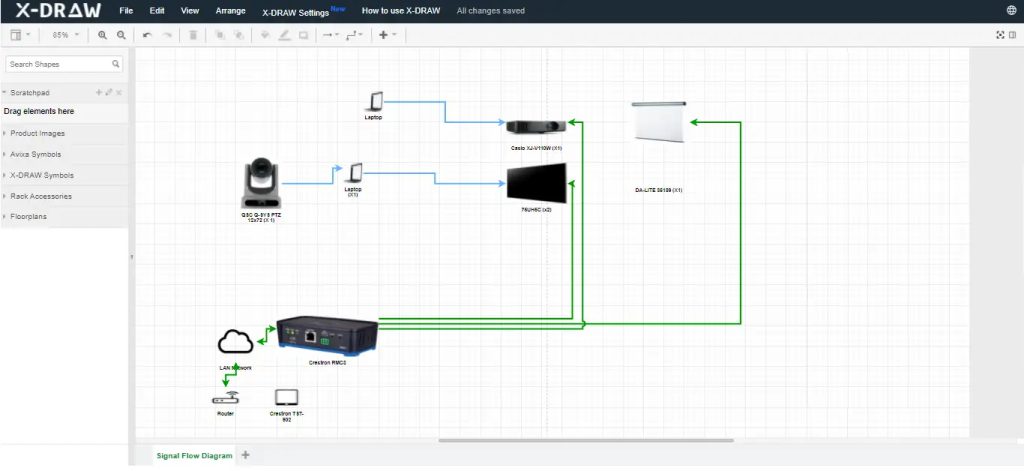How to Read and Understand Electrical Wiring Diagrams

Table of Contents
ToggleIn the world of electrical installations and home improvement projects, understanding a wiring diagram is a fundamental skill. Whether you are a DIY enthusiast, a student learning electrical systems, or a professional electrician, the ability to read and interpret wiring diagrams helps you plan projects, solve problems, and avoid costly mistakes. With the growing availability of wiring diagram maker tools and free wiring diagram software, creating and reading diagrams has become more accessible than ever. This blog will guide you through the essentials of reading and understanding electrical wiring diagrams step by step.
What is a Wiring Diagram
A wiring diagram is a visual representation of an electrical circuit. It shows how electrical components are connected and how current flows through the system. Unlike a pictorial drawing, which uses realistic images of components, a wiring diagram uses standardized symbols to represent switches, outlets, lights, conductors, and other devices. This standardized approach makes it easier to understand complex circuits quickly.
Wiring diagrams are commonly used in residential, commercial, and industrial electrical systems. They help electricians install, repair, and troubleshoot wiring in buildings, vehicles, and equipment.
Importance of Understanding Wiring Diagrams
Reading a wiring diagram correctly ensures that electrical systems are installed safely and function as intended. Misinterpreting a diagram can lead to wiring errors, short circuits, or even fire hazards. For DIY home projects, understanding these diagrams means you can handle basic electrical work with confidence. For professionals, it is a daily necessity to ensure precise and safe electrical installations.
Using a wiring diagram maker can simplify the process of creating customized diagrams for new installations or upgrades. Similarly, free wiring diagram software helps both beginners and experts draft accurate representations of circuits without expensive tools.
Key Elements of a Wiring Diagram
Before you can read a wiring diagram, you need to understand its basic components. Here are the essential elements you will encounter.
- Symbols
Every component in an electrical circuit is represented by a standard symbol. Switches, lights, outlets, wires, ground connections, and other devices have their unique symbols. Learning these symbols is the first step to reading diagrams effectively. - Lines and Connections
Lines represent wires that carry current between components. A simple line indicates a conductor, while dots or intersections show connections between wires. Lines that cross without connecting are usually shown with a small loop to indicate no connection. - Labels and Notations
Diagrams often include labels that describe wire colors, circuit numbers, or terminal designations. These details provide additional clarity and help during installation. - Power Source
Every diagram will indicate the power source, usually represented by lines labeled as live, neutral, and ground. Understanding where power enters the circuit is essential for tracing current flow. - Components and Devices
You will see symbols for switches, receptacles, lights, transformers, circuit breakers, and other devices. Knowing their placement in the circuit helps you understand how electricity flows from the source to each component.
How to Read a Wiring Diagram Step by Step
Here is a structured way to approach reading any wiring diagram.
- Start at the Power Source
Identify where the power enters the circuit. Look for labels such as L (live), N (neutral), and G (ground). This is your starting point to trace the current flow. - Follow the Flow of Current
Move along the diagram from the power source through wires and devices. Follow the lines systematically to understand how electricity travels through switches, outlets, and loads. - Identify Control Devices
Switches and sensors control how current flows in the circuit. Locate these devices and note how they are wired in relation to the power source and load. - Look for Protective Devices
Circuit breakers, fuses, or ground fault protection devices are often included in the diagram. Understanding their placement helps you see how the system is protected from overloads or faults. - Trace Each Branch
If the circuit has multiple branches, follow each one individually. This method helps avoid confusion and ensures that you do not miss any part of the system. - Refer to the Legend
Most wiring diagrams include a legend that explains the meaning of each symbol and label. Use this as a quick reference while reading the diagram.
Tips for Beginners
- Learn Symbols Gradually
Start by memorizing the most common symbols used in residential diagrams, such as switches, lights, outlets, and ground connections. Over time, you can learn more advanced symbols used in complex systems. - Practice with Simple Circuits First
Begin with basic lighting circuits or switch-controlled outlets. Once you are comfortable, move on to more complicated diagrams like multiway switches or panel wiring. - Use a Wiring Diagram Maker
Creating your own diagrams using a wiring diagram maker helps reinforce what you learn. You can design circuits, adjust connections, and visualize how each part fits together. - Take Advantage of Free Wiring Diagram Software
There are many free wiring diagram software tools available online that allow you to experiment with different circuit layouts. These tools provide preloaded symbols and easy drag and drop functionality, making learning easier. - Double Check Connections
When translating a diagram into a physical installation, always double check your connections before powering up. This step prevents damage to components and ensures safety.
Common Mistakes to Avoid
- Ignoring the legend or notations on the diagram
- Misinterpreting crossed lines as connected wires
- Overlooking protective devices in the circuit
- Skipping steps when tracing current flow
- Not labeling wires clearly during installation
By avoiding these mistakes, you can read and apply wiring diagrams more effectively.
Conclusion
Learning how to read and understand an electrical wiring diagram is a valuable skill for both DIYers and professionals. With the help of modern tools like wiring diagram maker platforms and free wiring diagram software, creating and interpreting diagrams has become simpler and more efficient. By mastering symbols, understanding circuit flow, and practicing regularly, you can confidently work on electrical projects and ensure they are completed safely and accurately.
Whether you are designing a new system or troubleshooting an existing one, wiring diagrams are your most reliable guide to understanding how electrical circuits work.
Read more: https://audiovisual.hashnode.dev/best-wiring-diagram-software-features-and-reviews
- Arts & Style (100)
- Automobile (288)
- Business (5,740)
- Business and Entrepreneurship (168)
- Career Development (55)
- Climate & Environment (26)
- Creative (34)
- Culture (1,562)
- Beauty (284)
- Skincare (243)
- Cultural Studies (75)
- Digital Life (73)
- Energy Healing (31)
- Fashion (1,040)
- Clothing (697)
- Fashion Design (234)
- Philosophy (7)
- Morality (6)
- Religion (17)
- Sports (116)
- Beauty (284)
- Digital Marketing (343)
- DIY and Crafts (15)
- Economics (8)
- Education (1,285)
- Entertainment (198)
- Faith & Spiritual (10)
- Fashion and Beauty (155)
- Finance and Money Management (211)
- Fitness and Exercise (32)
- Food and Drink (171)
- Game (142)
- Health and Wellness (1,099)
- Home and Garden (390)
- Immigration (1)
- Law (144)
- Lifestyle (1,384)
- Health (685)
- Home (390)
- Architecture (100)
- Interior Design (216)
- Rental Property (27)
- Pets (76)
- Relationships (70)
- Restaurants (19)
- Literature (7)
- Media (273)
- Packaging (41)
- Politics (1)
- Real Estate (257)
- Science and Nature (14)
- SEO (141)
- Social Media Marketing (51)
- Software Development (227)
- Sports and Fitness (44)
- Technology (854)
- Artificial Intelligence (239)
- Blockchain (61)
- Data Science (113)
- Gadgets (145)
- Security (142)
- Transportation (111)
- Travel & Tourism (743)
- Uncategorized (2,016)
- World (62)
- International (59)
- Expert Migration Agents in Brisbane: Trusted MARA Professionals Near You
- How to Style Diamond Earrings for Any Occasion

- KYC Verification: Strengthening Financial Integrity Through Identity and Transaction Monitoring

- Absorb More Comfort with Towel Hub’s Soft Wholesale Towels

- Latest Nexa Vape Flavors and Pods: A Realistic Look at What’s New


Step into a realm of thrilling possibilities where daman game login opens the door to unparalleled a

Ready to elevate your gameplay experience with the engaging features of the daman login game

Absorb More Comfort with Towel Hub’s Soft Wholesale Towels

Top Benefits of Partnering with the Best Flutter App Development Company

How to Read and Understand Electrical Wiring Diagrams

Why Every IT Department Needs a Server Rack Diagram Maker

How to Streamline Your AV Project Lifecycle with Design Tools
